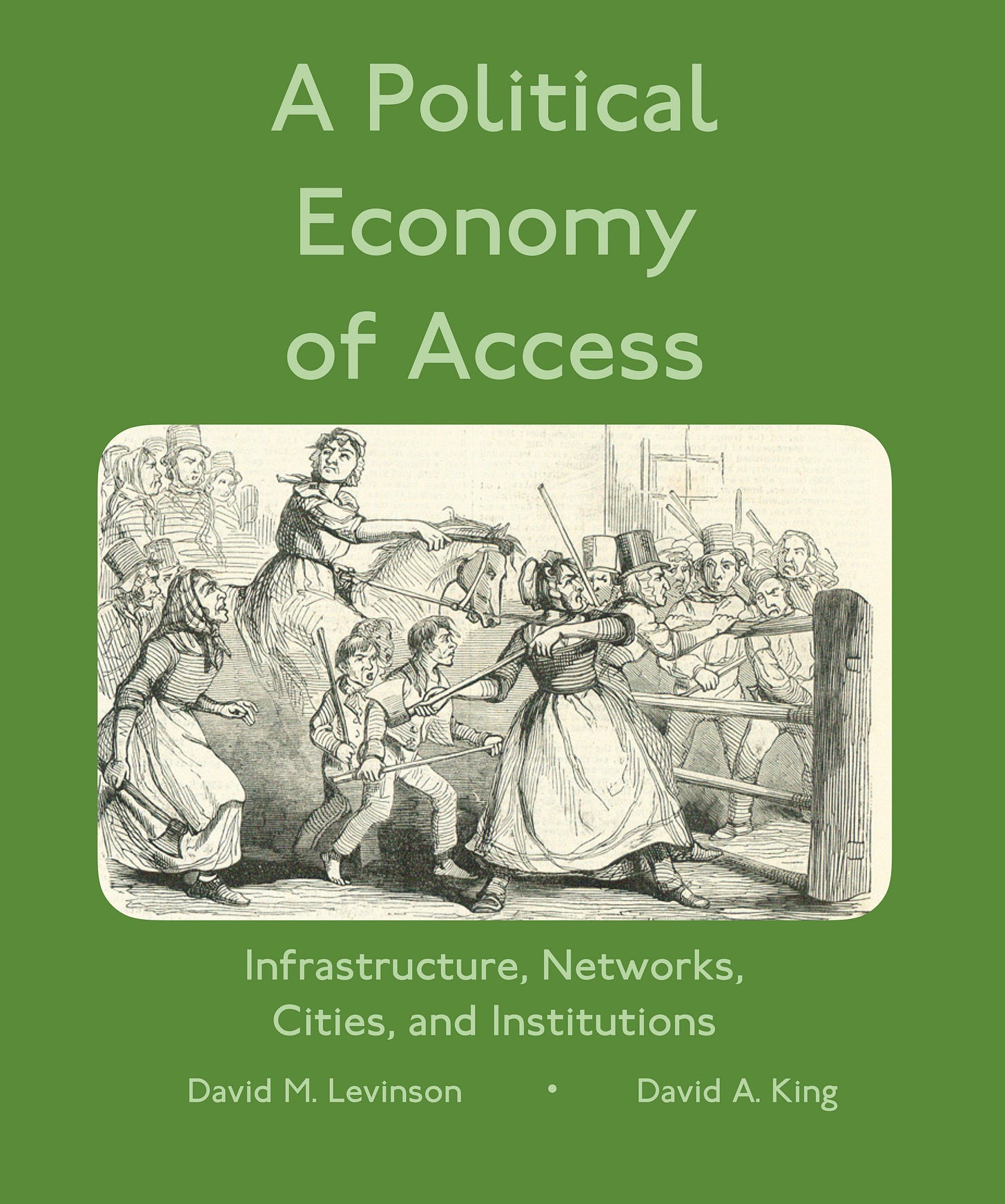Fielding Dreams - Hypotheses about Induced Demand and Induced Supply,
In the Kevin Costner film Field of Dreams, a ghost whispers "Build it and they will come" 'it' refers to a baseball field; 'they' are the ghosts of past baseball players. This has been adopted by planners to describe the idea of induced demand, which applied in transport is that if you build a new facility (road, tracks, etc.) demand will respond and use it, making trips that previously would have been unmade.
The Field of Dreams
This has been illustrated using economic supply and demand curves, and to an economist this "induced" or "latent" demand was always there, just unrealized until the cost of travel was lowered by the new capacity. The road (or train) fills up, congestion returns (or at least the expected congestion reduction benefits do not last long, as travelers adapt to the new environment. The consumers' surplus increases, as people can now do things they want to do at lower cost. In the planner's telling, only the hapless traffic engineer (or traffic modeler who is as often a planner as engineer), who made the partial equilibrium assumption that demand does not respond to supply, is surprised by this growth.

A Political Economy of Access: Infrastructure, Networks, Cities, and Institutions by David M. Levinson and David A. King
Of course induced demand is not surprising to anyone who has thought about this, and the idea of induced demand has long been well understood, even if the magnitude of induced demand associated with any given project are hard to estimate, and the models are not used appropriately, and internal consistency between model inputs and outputs is still not standard practice [I did my MS Thesis on this more than 25 years ago, and it wasn't a new idea then.] A related notion is Say's Law, from 1803: Supply creates its own demand, or more pedantically as per Wikipedia "that aggregate production necessarily creates an equal quantity of aggregate demand." Induced demand has been dealt with previously on the blog, here we lay out the hypotheses a bit more formally.
But there are 4 specific hypotheses (and 4 null alternatives) that can be generated here, varying three dimensions: construction (supply), demand response, and sequence:
If you build it, will they come? [Induced Demand Question]
H1: Build it and [then] they will come. [Because demand responds to supply, or because it was coming regardless] [Compare H2]
H1null: Build it and [then] they won't come [Because demand is independent of supply]. [See H4]
If they come, will you build it? [Induced Supply Question]
H2: They come and [then] you will build it. [Because supply responds to demand, or because you were building it regardless] [Compare H1]
H2null: They come and [then] you didn't build it. [Because supply is independent of demand] [See H3]
If you don't build it, will they come? [Exogenous Demand Question]
H3: Don't build it and [then] they will come [anyway]. [Because demand is independent of supply] [See H2null]
H3null: Don't build it and [then] they won't come [Either because demand is independent of supply, or because you didn't build it]. [See H4null]
If they don't come, will you build it? [Exogenous Supply Question]
H4: They don't come and [then] you build it. [Because supply is independent of demand] [See H1null]
H4null: They don't come and [then] you didn't build it. [Either because supply is independent of demand or because they didn't come.] [See H3null]
Each of these tells us something a bit different. There is both the dependence of the supply-demand question (are they dependent or independent), and there is the sequencing (which comes first, transport or land use).
Of course these are binaries, and we could consider how many of "them" need to come for us to say "they came". So you built a stadium to seat 10,000 and 5,000 came, is that evidence of induced demand? In short, yes, but not as much as you planned for.
Karl Popper developed the idea of falsifiability, which a website says: "is the assertion that for any hypothesis to have credence, it must be inherently disprovable before it can become accepted as a scientific hypothesis or theory."
Sequencing, matters here, and it's hard to prove a negative. A single sequence of events cannot provide proof for induced demand, maybe everyone was going to show up in Kinsella's Field anyway, and the field just accommodated them. Just because they never showed up before he built the stadium is not the evidence we require. Instead, we need to compare multiple cases to justify our case, and build the evidence for it.
A sequence of events can however disprove induced demand (or supply), as the list above illustrates, there are several cases where construction does not result in demand (we can conclusively disallow induced demand in that case) or where demand does not create supply (we can conclusively refute induced supply).
There are some other issues, what if they come and you didn't build it (or you didn't build and they come)? It is sort of hard to get the sequence correct in the absence of an event, when did the event of non-construction happen (or when did construction not happen)? Always. The related question is when did the absence of demand occur?
In either case, negative externalities ensue, this is the NIMBY fear of growth without supporting infrastructure. NIMBYs may not want the growth with the supporting infrastructure either, but their main complaint, on face value, is growth without it, which realistically may negatively affect their personal quality of life and property value. Whether or not you believe they should prevail, you at least understand their point-of-view.
Policy responses to ensure consistency between supply and demand include concurrency or adequate public facilities ordinances. Having worked on these before, these are rightly treated skeptically by the public.

